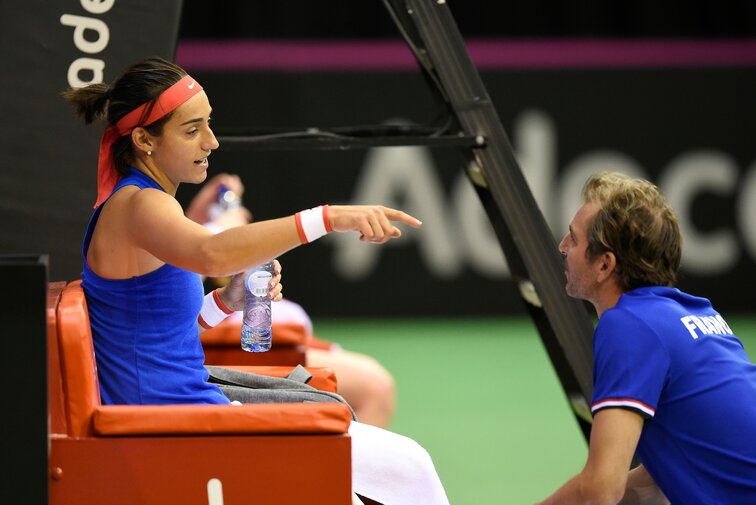Analytics in Tennis: How data influences the match preparation
In times of detailed data collection of tennis matches , the preparation of statistics plays an increasingly important role in professional tennis . Top players in the men spend up to seven-digit sums for analytics, in the ladies tablets are used in on-court coaching.
by Lukas Zahrer
last edit:
Nov 19, 2019, 03:43 pm

"Every player follows certain patterns. And every player needs such patterns, "explains Wim Fissette to WTA Insider . "They help you to stay calm in stressful situations."
Today's state of the art allows these patterns in numbers. This information is used by players on the WTA Tour to prepare themselves for the next opponent and to gain an advantage at best.
"But that does not mean that certain patterns make you predictable," dismisses Fissette. Rather, the number of firmly anchored moves is important. Like in a strategy book that coordinates the attacks of a team in basketball or American football.
Wim Fissette: Analytics? "Everything I say can be proven with numbers"
The technology group SAP offers professionals on the WTA tour a service that spits out collected data from players as tendencies that would most likely behave in a variety of situations. In particular, the short rallies are a factor in which you can start quickly.
"The tactical alignment is decided in the first four strokes, you prepare yourself before the rally," explains Fissette. "You play the serve in such a way that you attach exactly those forehand or backhand, with which you feel well." Similarly it behaves at the return.
From the fifth blow in a rally, start a new level, which is to prepare a throwing impact on angular play and a skillful placement of the ball. From nine strokes, the physique comes into play. "The fierce player will win the rally," says Fissette.
With these ulterior motives, the final training before a match for professional players can tailor, as was the case before the time of data-driven clues. In addition to analysis of rallies, the software offers a feature that examines the ball throw. This allows players to identify the direction or type of serve sooner.
Fissette, who has worked with Kim Clijsters, Simona Halep or Angelique Kerber on the tour and now looks after Viktoria Azarenka, is pleased that his feedback has been reinforced with additional arguments. "You realize that everything I say can be proven by numbers," says Fissette.
Tennis Analytics: From Federer to Novak
Technological aids will play an increasingly important role in tennis in the future. At the ATP Nextgen Finals in Milan, for the first time, players were allowed to use wearable sensors that record the movement on the court.
Roger Federer also reportedly paid a lot of money for many months to get exclusive insights into statistics and data. In doing so, he not only buys the expertise, but also ensures that the insights of direct competition are denied.
Novak Djokovic works as well as Matteo Berrettini in certain tournament weeks together with the statistics expert Craig O'Shanessy . The Australian has his own blog and is also always on TV as an analyst in action.
Even outside the top 10, players are concerned about these aspects. Julian Knowle confirmed in the tennisnet interview, for example, that young players still have a lot of reserves in this regard. In his role as coach of Dennis Novak he tries to adapt his tactical basic orientation to the strengths of the opponent.
Analytics critics in tennis sport argue that few absolute top earners have the luxury of shopping for expensive money.
